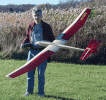 All RF Cafe Quizzes make great fodder for
employment interviews for technicians or engineers - particularly those who are
fresh out of school or are relatively new to the work world. Come to think of it,
they would make equally excellent study material for the same persons who are going
to be interviewed for a job. Bonne chance, Viel Glück, がんばろう,
buena suerte, удачи, in bocca al lupo, 행운을 빕니다,
ádh mór, בהצלחה, lykke til, 祝你好運.
Well, you know what I mean: Good luck! All RF Cafe Quizzes make great fodder for
employment interviews for technicians or engineers - particularly those who are
fresh out of school or are relatively new to the work world. Come to think of it,
they would make equally excellent study material for the same persons who are going
to be interviewed for a job. Bonne chance, Viel Glück, がんばろう,
buena suerte, удачи, in bocca al lupo, 행운을 빕니다,
ádh mór, בהצלחה, lykke til, 祝你好運.
Well, you know what I mean: Good luck!
Click here for the complete list of
RF Cafe Quizzes.
Note: Some material based on books have quoted passages.
Return to RF Cafe
Quiz #57

This quiz is based on the information presented in Frequency-Agile Antennas for Wireless
Communications, by Aldo Petosa. Note: Some of these
books are available as prizes in the monthly
RF Cafe Giveaway.
1. To which class of antennas do frequency
agile antennas (FAAs) belong? c) Active integrated antennas (AIAs) In the
context of this book, FAAs can be considered to belong to the larger class of antennas known
as AIAs. (see page 3) 2. How does antenna gain
differ from antenna directivity? d) Gain accounts for losses as well as directivity
Directivity is a ratio of power relative to specific directions where losses up to the feed
point are already accounted for. An ideal antenna can be perfectly directional but still exhibit
a loss. (see page 9) 3. What are the two types
of tuning used in FAAs? a) Discrete and continuous Discrete tuning alters
the frequency to a fixed number of distinct values while continuous tuning can take on any tuning
value. (see page 15) 4. When did microstrip
antennas start coming into common use? c) In the 1970s Microstrip circuit
technology was introduced in the 1960s, and microstrip antennas followed in the mid 1970s.
(see page 35) 5. For which microstrip patch antenna formats
does Frequency-Agile Antennas for Wireless Communications provide field equations?
a) Rectangular, dipole, circular, and annular (ring) The basic design equations
are given for a few of the most popular microstrip patch antennas. (see sub-chapter
3.4) 6. What type of tuning is typically available for
antennas? d) All the above (see page 87) 7.
How can the permittivity of ferroelectric substrates be altered? b) By applying
an electric field Ferroelectric substrates offer a behavior analogous to ferrites, where
the permittivity of the ferroelectric can be altered by the application of a static electric
field. (see Table 4.3 on page 103) 8. What methods
of mechanical tuning are practical for frequency agile antennas (FAAs)? d) All
the above The types of actuators used include electrostatic, piezoelectric, magnetostatic,
hydraulic, and pneumatic. Information for each example includes tuning range, total spectrum,
bias requirements, and antenna performance. (see page 149)
9. What is a major advantage of liquid crystals over ferroelectric substrates?
a) Lower bias voltage The advantages of liquid crystals over ferroelectrics
include the much lower bias voltages required and the inherently low values of the dielectric
constant. (see page 194) 10. What is the most
widely used component type for continuous tuning FFAs? d) Varactor diodes
The majority of continuous tuning schemes use varactor diodes. (see Table 7.1
on page 279)
|





























